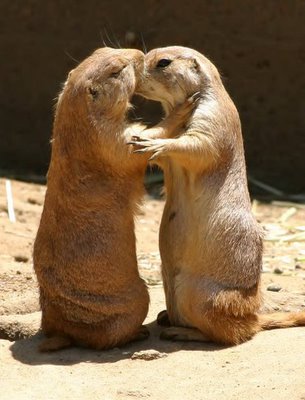oh. so THAT's what happened ~~

Where does new love dwell? A scientific map
By Benedict Carey The New York Times
NEW YORK New love can look for all the world like mental illness, a blend of mania, dementia and obsession that cuts people off from friends and family and prompts out-of-character behavior - compulsive phone calling, serenades, yelling from rooftops - that could almost be mistaken for psychosis.
Now for the first time, neuroscientists have produced brain scan images of this fevered activity, before it settles into the wine-and-roses phase of romance or the joint holiday card routines of long-term commitment.
In an analysis of the images appearing Tuesday in The Journal of Neurophysiology, researchers in New York and New Jersey argue that romantic love is a biological urge distinct from sexual arousal. It is closer in its neural profile to drives like hunger, thirst or drug craving, the researchers assert, than to emotional states like excitement or affection.
As a relationship deepens, the brain scans suggest, the neural activity associated with romantic love alters slightly, and in some cases primes areas deep in the primitive brain that are involved in long-term attachment.
The research helps explain why love produces such disparate emotions, from euphoria to anger, and why it seems to become even more intense when it is withdrawn.
"When you're in the throes of this romantic love, it's overwhelming - you're out of control, you're irrational, you're going to the gym at 6 a.m. every day - Why? Because she's there," said Helen Fisher, co-author of the analysis.
"And when rejected, some people contemplate stalking, homicide, suicide," said Fisher, an anthropologist at Rutgers University in New Jersey. "This drive for romantic love can be stronger than the will to live."
Yet falling in love is among the most irrational of human behaviors, not merely a matter of satisfying a simple pleasure, or winning a reward. And the researchers found that one particular spot in the MRI images, in the caudate nucleus, was especially active in people who scored high on a questionnaire measuring passionate love.
This passion-related region was on the opposite side of the brain from another area that registers physical attractiveness, the researchers found, and appeared to be involved in longing, desire and the unexplainable tug that people feel toward one person, among many attractive alternative partners.
This distinction, between finding someone attractive and desiring him or her, between liking and wanting, "is all happening in an area of the mammalian brain that takes care of most basic functions, like eating, drinking, eye movements, all at an unconscious level, and I don't think anyone expected this part of the brain to be so specialized," Brown said.
For the rest, click the title.
And be sure and click here for the ground hogs ~~ the guy is phenomenal!
Oops! And a tip o' the hat to Travis.












3 comments:
What a *cute* pic!
I've posted his 'kewl link' on my blog. :)
;)
One could posit that these falling-in-love brain patterns are quite similar in the formation of new friendships. In my minds eye ‘relationships‘ and ‘love’ are both continuum words; not parallel but co-mingled. They are words our language so inadequately defines; their complex connotations and their use may cause people to freak out. In general, friendship and love aren’t discussed together, but certainly the affection felt for a friend is on the continuum of love. Think about the blog – it is an actual community, built through friendships in online discussions, many continuing offblog. Yes, I think the feelings in building those friendships are quite similar to that described in the article. Talking hesitantly at first perhaps, looking forward to the next reply, gradually revealing more about oneself, being excited to ‘connect’ online, and possibly even meet in person at D-fest or elsewhere. Just a thought…
Post a Comment